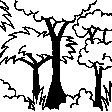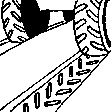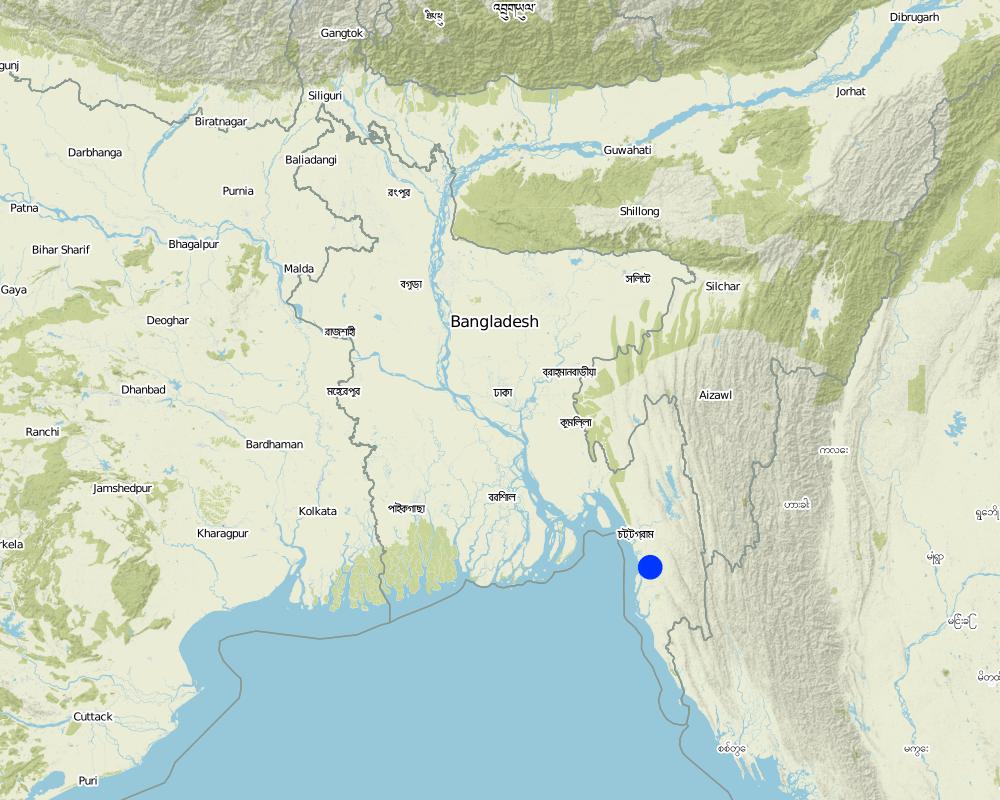Traditional Shifting Cultivation [بنغلاديش]
- تاريخ الإنشاء:
- تحديث:
- جامع المعلومات: Abdul Gafur
- المحرر: –
- المراجعون: David Streiff, Alexandra Gavilano
Jhum
technologies_965 - بنغلاديش
عرض الأقسام
توسيع الكل طي الكل1. معلومات عامة
1.2 تفاصيل الاتصال بالأشخاص الرئيسيين لمصدر المعلومات والمؤسسات المشاركة في تقييم وتوثيق التقنية
اسم المؤسسة (المؤسسات) التي سهلت توثيق/تقييم التقنية (إذا كان ذلك على صلة)
Soil Resource Development Institute (SRDI) (Soil Resource Development Institute (SRDI)) - بنغلاديش1.3 الشروط المتعلقة باستخدام البيانات الموثقة من خلال WOCAT
يوافق جامع المعلومات والشخص (لاشخاص) الرئيسي لمصدر المعلومات على الشروط المتعلقة باستخدام البيانات الموثقة من خلال WOCAT:
نعم
1.5 الإشارة إلى الاستبيان (الاستبيانات) حول مناهج الإدارة المستدامة للأراضي (موثقة باستخدام WOCAT)

Strategies of traditional shifting cultivation [بنغلاديش]
Tradtional appraoch to jhuming involving tribal institutions and traditonal knowledge based technologies.
- جامع المعلومات: Abdul Gafur
2. وصف تقنيةالإدارة المستدامي للأراضي
2.1 وصف مختصر للتقنية
تعريف التقنية:
Traditional shifting cultivation is a rain-fed cultivation practice of the trible people of CHT (Chittagong Hill Tracts) for their subsistence, where natural vegetation is cleared off by slash-and-burn, to grow mixed annual crop for one year and then the land is left fallow for 3-5 years for natural regeneration.
2.2 وصف تفصيلي للتقنية
الوصف:
Jhum or Shifting cultivation is an age-old hill farming practice of CHT as elsewhere in the world, especially in the hilly region of the tropics and sub-tropics covering different agro-ecological zones. In this system the plant nutrients, which are gradually released in the soil, added from the atmosphere or from dust or silt deposition, accumulates in the fallow vegetation and in the soil during the fallow period. It is then utilized over a shorter period of time than the period of accumulation. In this rain-fed cultivation system an area is cleared off from natural vegetation by slash-and-burn, cropped for one or two years and then allowed to revert to natural vegetation. After some years, the area may be cleared and cropped again in the similar manner, but not necessarily within the same boundaries, nor by the same farmers.
This is a mixed cropping system of the ethnic people of CHT for their sustainable food supply . In Jhum system sowing and weeding are done without major topsoil disturbance using simple tools. Jhumias grow mixed crops like upland paddy, maize, sesame, flower, chilli , sour leaf, cucurbits, beans, turmeric, ginger, cotton, etc together but harvest the crops in succession. This cultivation system is not environment friendly as it declines soil fertility, acclerates soil erosion, and reduces biodiversity.
2.5 البلد/المنطقة/المواقع التي تم تنفيذ التقنية فيها والتي يغطيها هذا التقييم
البلد:
بنغلاديش
المنطقة/الولاية/المحافظة:
Chittagong Hill Tracts (CHT)
حدد انتشار التقنية:
- منتشرة بالتساوي على مساحة
إذا كانت التقنيةا موزعة بالتساوي على منطقة ما، حدد المساحة المغطاة (بالكيلومتر المربع):
0,04
إذا كانت المساحة الدقيقة غير معروفة، فيرجى الإشارة إلى المنطقة التقريبية المغطاة:
- 1,000-100 كم2
التعليقات:
Total area covered by the SLM Technology is 0.04 km2.
Shifting cultivation is the common practice of the tribal people and covers about 2.5% area of CHT region.
Map
×2.6 تاريخ التنفيذ
في حالة عدم معرفة السنة بالتحديد، يرجى الإشارة إلى التاريخ التقريبي:
- منذ أكثر من 50 عامًا (تقليدي)
2.7 إدخال التقنية
حدد كيف تم إدخال التقنية:
- كجزء من النظام التقليدي (> 50 عامًا)
التعليقات (نوع المشروع، الخ):
From old generation
3. تصنيف تقنية الإدارة المستدامي للأراضي
3.1 الغرض الرئيسي ( الأغراض الرئيسية) للتقنية
- الحد من تدهور الأراضي ومنعه وعكسه
- الحفاظ على/تحسين التنوع البيولوجي
3.2 نوع (أنواع) استخدام الأراضي الحالية حيث يتم تطبيق التقنية

الغابات/ الأراضي الحرجية
منتجات وخدمات:
- الخشب
- حطب الوقود
- Shifting cultivation
التعليقات:
Major land use problems (compiler’s opinion): Due to scarcity of land for judicial paddy production, the tribals have resorted to use marginal areas of CHT for Jhum. Unlike the past, the fallow period has reduced to 3-5 years from 15-20 years which has led to decline in the soil fertility, acclerated erosion, and diminishing trend of biodiversity.
Major land use problems (land users’ perception): Scarcity of plain land for paddy cultivation & no other alternatives for income generation. Besides labour scarcity, lack of financial support, weed & pest controlt, low fertiltiy etc. are the main constraints for optimum crop production.
Number of growing seasons per year: 1
Longest growing period in days: 8; Longest growing period from month to month: May - Dec
3.5 مجموعةالإدارة المستدامة للأراضي التي تنتمي إليها هذه التقنية
- أنظمة التناوب (تعاقب المحاصيل، البور، الزراعة المتنقلة)
3.6 التدابير التقنية في مجال إلادارة المستدامة للأراضي

التدابير الزراعية
- A1: الغطاء النباتي/التربة
- A3: معالجة سطح التربة
3.7 الأنواع الرئيسية من تدهور الأراضي التي تناولتها التقنية

التدهور المادي أو الفيزيائي للتربة
- (Pu): فقدان الوظيفة الإنتاجية الحيوية بسبب أنشطة أخرى
3.8 منع أو حد أو عكس تدهور الأراضي
تحديد هدف التقنية فيما يتعلق بتدهور الأراضي:
- منع تدهور الأراضي
4. المواصفات الفنية، وأنشطة التنفيذ، والمدخلات، والتكاليف
4.1 الرسم الفني للتقنية
المواصفات الفنية (المتعلقة بالرسم الفني):
Technical knowledge required for field staff / advisors: high
Technical knowledge required for land users: high
Mixed cropping / intercropping
Material/ species: rice, maize, cucrubit, vegetables, pulses, spices
Quantity/ density: 55 kg of s
Remarks: ramdomly all over the hill slope
Agronomic measure: mixed cropping / intercrop
Material/ species: rice, maize, cucrubit, veg
Quantity/ density: 55 kg of s
Remarks: ramdomly all over the hill slope
Minimum tillage
Remarks: sowing of seed by dibbling with Dao
Trees/ shrubs species: Nitrogen fixing shrubs and trees
Change of land use type: Conversion of forest in to Jhum
Layout change according to natural and human environment
Control / change of species composition: As per requirement of the farmer
4.2 معلومات عامة بخصوص حساب المدخلات والتكاليف
عملة أخرى/ عملة وطنية (حدد):
Taka
إذا كان ذا صلة، وضح سعر الصرف من الدولار الأمريكي إلى العملة المحلية (على سبيل المثال، 1 دولار أمريكي = 79.9 ريال برازيلي): 1 دولار أمريكي =:
58,0
اذكر متوسط تكلفة أجر العمالة المستأجرة في اليوم الواحد:
1.70
4.3 أنشطة التأسيس
| النشاط | التوقيت (الموسم) | |
|---|---|---|
| 1. | Establisment of hedge rows |
4.4 التكاليف والمدخلات اللازمة للتأسيس
التعليقات:
Duration of establishment phase: 12 month(s)
4.5 الصيانة/الأنشطة المتكررة
| النشاط | التوقيت/الوتيرة | |
|---|---|---|
| 1. | Dibbling Sowing Broadcasting | May / once |
| 2. | Weeding | 2, 5 & 10th week after sowing / Thrice |
| 3. | Fertilization | before booting of paddy / 1-2 time |
| 4. | Pesticide application | if required / |
| 5. | Harvesting, then Thrashing | after maturity / in succession, after harvest / in succession |
| 6. | Pruning & gap filling |
4.6 التكاليف والمدخلات اللازمة للصيانة/للأنشطة المتكررة (سنويًا)
التعليقات:
The establishment cost referred to per hactare/year. As this is one year's shifting practice, so no recurring cost were incured.
4.7 أهم العوامل المؤثرة على التكاليف
قدم وصفا لأهم العوامل التي تؤثر على التكاليف:
Labor for land preparation (slashing & burning), sowing, weeding, watching and harvesting.
5. البيئة الطبيعية والبشرية
5.1 المناخ
هطول الأمطار السنوي
- < 250 مم
- 251- 500 ملم
- 501 - 750ملم
- 1,000-751 ملم
- 1,500-1,100 ملم
- 2,000-1,500 ملم
- 3,000-2,001 ملم
- 4,000-3,100 ملم
- > 4000 ملم
حدد متوسط هطول الأمطار السنوي (إذا كان معروفًا)، بالملليمتر:
2682,00
المنطقة المناخية الزراعية
- شبه رطبة
5.2 طوبوغرافيا
متوسط الانحدارات:
- مسطح (0-2%)
- بسيط (3-5%)
- معتدل (6-10%)
- متدحرج (11-15%)
- تلال (16-30%)
- شديدة الانحدار(31-60%)
- فائقة الانحدار (>60%)
التضاريس:
- هضاب/سهول
- أثلام مرتفعة
- المنحدرات الجبلية
- منحدرات التلال
- منحدرات في السفوح
- قاع الوادي
المنطقة الارتفاعية:
- 100-0 متر فوق سطح البحر
- 500-101 متر فوق سطح البحر
- 1,000-501 متر فوق سطح البحر
- 1,500-1,001 متر فوق سطح البحر
- 2,000-1,501 متر فوق سطح البحر
- 2,500-2,100 متر فوق سطح البحر
- 3,000-2,501 متر فوق سطح البحر
- 4,000-3,001 متر فوق سطح البحر
- > 4000 متر فوق سطح البحر
التعليقات والمواصفات الإضافية بشأن التضاريس:
Slopes on average: Also Moderate, rolling and very steep
5.3 التربة
متوسط عمق التربة:
- ضحل جدًا (0-20 سم)
- ضحلة (21-50 سم)
- متوسطة العمق (51-80 سم)
- عميقة (81-120 سم)
- عميقة جدًا (> 120 سم)
قوام التربة (التربة السطحية):
- متوسط ( طميي، سلتي)
- ناعم/ثقيل (طيني)
المواد العضوية في التربة السطحية:
- متوسطة (1-3%)
- منخفضة (<1%)
إذا كان متاحًا، قم بإرفاق وصف كامل للتربة أو تحديد المعلومات المتوفرة، على سبيل المثال نوع التربة، الرقم الهيدروجيني/ درجة حموضة التربة، قدرة التبادل الكاتيوني، النيتروجين، الملوحة وما إلى ذلك.
Soil depth on average: Also deep
Soil fertility is predominant low but can reach up to high
Soil drainage / infiltration is good
Soil water storage capacity is predominant low but can reach up to high
5.6 خصائص مستخدمي الأراضي الذين يطبقون التقنية
الدخل من خارج المزرعة:
- أقل من % 10من كامل الدخل
المستوى النسبي للثروة:
- ضعيف جدا
- ضعيف
اذكر الخصائص الأخرى ذات الصلة لمستخدمي الأراضي:
Population density: 50-100 persons/km2
Annual population growth: 2% - 3%
Off-farm income specification: 75% (engaged in market oriented production system, off-farm labour, business, jobs etc.)
5.8 ملكية الأراضي، وحقوق استخدام الأراضي، وحقوق استخدام المياه
ملكية الارض:
- دولة
- مجتمعي/قروي
حقوق استخدام الأراضي:
- وصول مفتوح (غير منظم)
- مؤجر
6. الآثار والتصريحات الختامية
6.4 تحليل التكلفة والعائد
كيف يمكن مقارنة العوائد نسبة لتكاليف الإنشاء (من وجهة نظر مستخدمي الأراضي)؟
عوائد قصيرة الأجل:
سلبي قليلا
عوائد طويلة الأجل:
سلبي
كيف تتم مقارنة العوائدمع كلفة الصيانة/التكاليف المتكررة (من وجهة نظر مستخدمي الأراضي)؟
عوائد قصيرة الأجل:
محايد/متوازن
عوائد طويلة الأجل:
محايد/متوازن
6.5 اعتماد التقنية
- 1-10%
إذا كان متاحًا، قم بتحديد الكمية (عدد الأسر المعيشية و/أو المساحةالمغطاة):
9 households covering 10 percent of the stated area
من بين جميع الذين تبنوا التقنية، كم عدد الذين فعلوا ذلك بشكل تلقائي، أي دون تلقي أي حوافز مادية/مدفوعات؟:
- 91-100%
التعليقات:
100% of land user families have adopted the Technology without any external material support
Comments on spontaneous adoption: estimates
There is a little trend towards spontaneous adoption of the Technology
7. المراجع والروابط
7.1 طرق جمع/مصادر المعلومات
الروابط والوحدات المواضيعية
توسيع الكل طي الكلالروابط

Strategies of traditional shifting cultivation [بنغلاديش]
Tradtional appraoch to jhuming involving tribal institutions and traditonal knowledge based technologies.
- جامع المعلومات: Abdul Gafur
الوحدات المواضيعية
لا يوجد وحدات مواضيعية


